Chicken is by far the most popular source of protein in the United States because of its comparatively low cost and healthiness. The average American today eats about 100 pounds of chicken a year. In all, U.S. citizens eat about eight billion chickens a year. Because watching sports has become synonymous with chicken wings, the Superbowl alone accounts for the sacrifice of 700 million chickens nationwide! So, which states produce the most chickens to feed our insatiable appetite for wings, chicken sandwiches, and nuggets? What are the pros and cons of the modern commercial poultry industry? Finally, what does it take to raise your own chickens? You’ll find all this information in this article.
Things You Didn’t Know About Chickens

Chickens have excellent vision and complex communication.
©MATTHIASRABBIONE/iStock via Getty Images
- People first domesticated chickens in Southeast Asia 5,400 years ago.
- Chickens see in color better than humans. In fact, their vision extends into the ultraviolet spectrum.
- The end of a chicken’s beak has sensors to help it distinguish between different kinds of objects.
- Chickens make 24 different sounds as they communicate with one another.
- Chickens raised for meat are called “broilers.”
Things You Didn’t Know About Chicken Meat

Chicken is the most popular meat consumed in the United States.
©Mallika Home Studio/Shutterstock.com
- Chicken meat is highly nutritious, with 30 different nutritional substances and a high level of protein.
- Half of the profits of soup manufacturers comes from the sale of chicken noodle soup.
- Chicken wings in hot sauce are called “Buffalo wings” because the recipe was first developed in a bar in Buffalo, New York.
- Chicken consumption in the United States doubled from 47.4 pounds per person in 1980 to 98.1 pounds per person in 2021.
- Tyson sells the most chicken in the United States, with $42 billion in sales.
States Producing Over 1 Billion Chickens
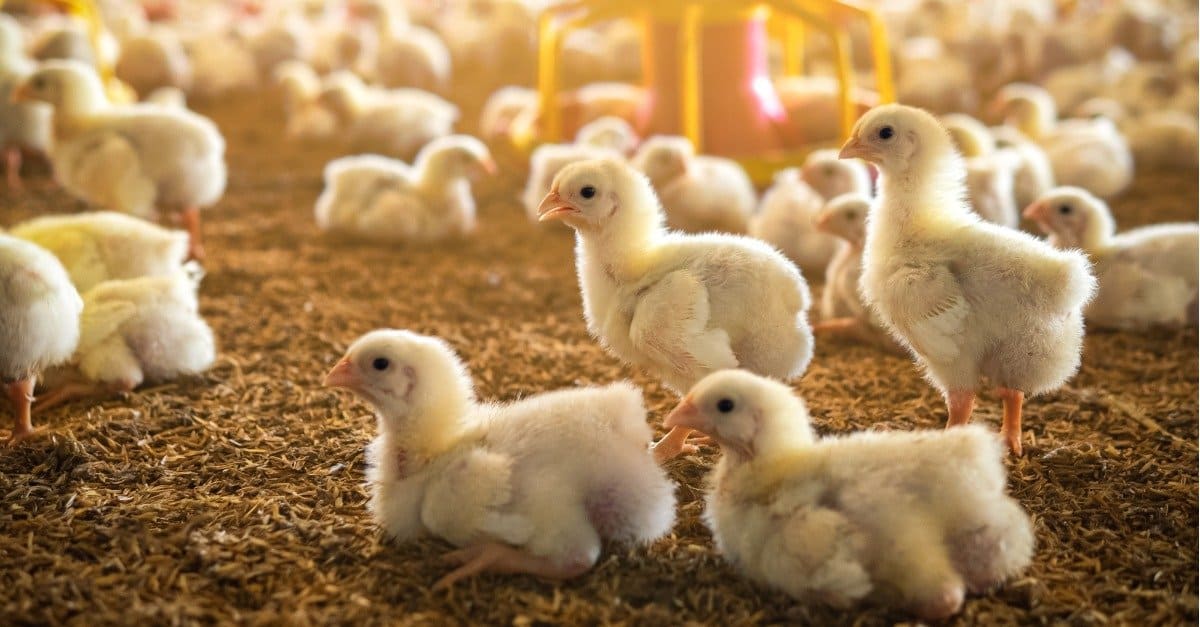
Over 100 of Georgia’s counties produce at least $1 million in poultry revenue.
©iStock.com/Polawat Klinkulabhirun
The United States produces 8.5 billion chickens a year. The top three chicken-producing states are all in the South, and each harvests over one billion chickens per year:
- Georgia: 1.3 billion
- Alabama: 1.2 billion
- Arkansas: 1.1 billion
Chicken production in Georgia, the country’s top producer, accounts for 47% of the state’s agriculture industry, generates $25.5 billion annually, and creates jobs for 104,000 Georgians. Remarkably, 102 of the state’s 159 counties produce at least $1 million in poultry revenue annually.
States Producing 300-999 Million Chickens

The climate and rural infrastructure in the South make it a good place to raise chickens.
©iStock.com/Sonja Filitz
The four states that produce 300-999 million chickens are also all in the South:
- North Carolina (971.4 million)
- Mississippi (707 million)
- Texas (706.6 million)
- Missouri (301.2 million)
To take Texas as an example, its poultry industry employs 40,500 people earning combined wages of over $1.8 billion. The industry contributes more than $3 billion a year to the state economy.
States Producing 200-299 Million Chickens
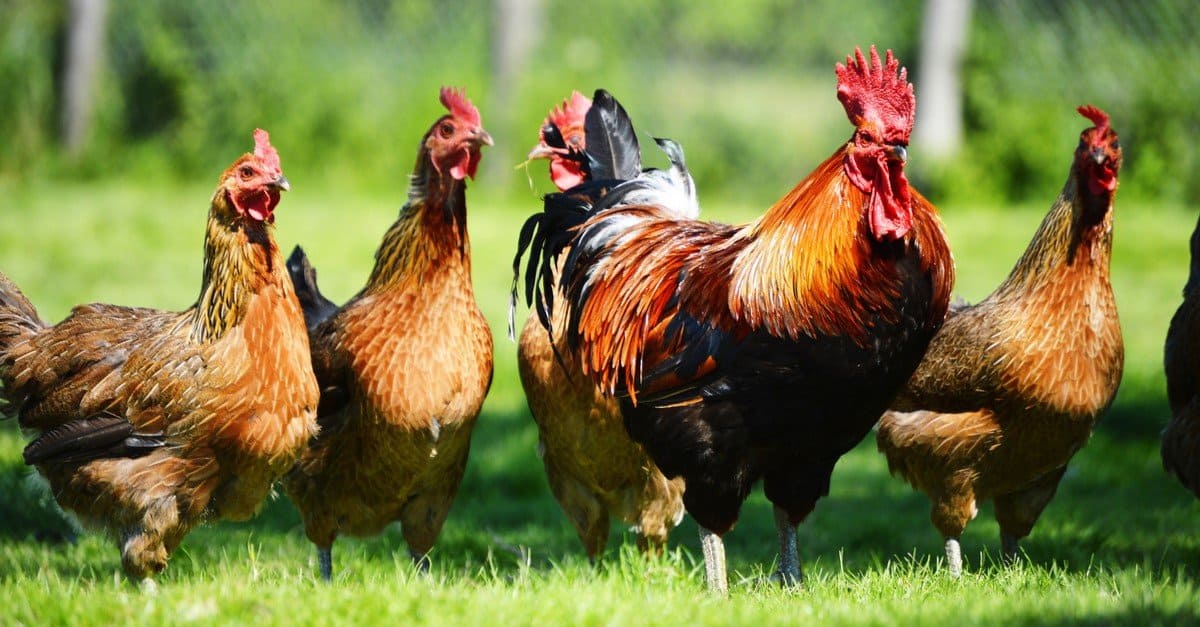
Commercial chickens are vaccinated but hormones and steroids are not used in production.
©monticello/Shutterstock.com
The following six states produce 200-299 million chickens:
- Kentucky (297.4 million)
- Virginia (285.4 million)
- Maryland (259.9 million)
- South Carolina (249.4 million)
- Pennsylvania (239.1 million)
- Delaware (222.4 million)
Pennsylvania’s poultry industry is likely to benefit from climate change. By 2050, average temperatures are expected to rise by 4.9°F and rainfall to increase by 8-12%. This will improve the state’s suitability for chicken farming at the same time as the heat makes it untenable in the South. Therefore, Pennsylvania expects its poultry facilities to double over the next 25 years.
States Producing 50-199 Million Chickens
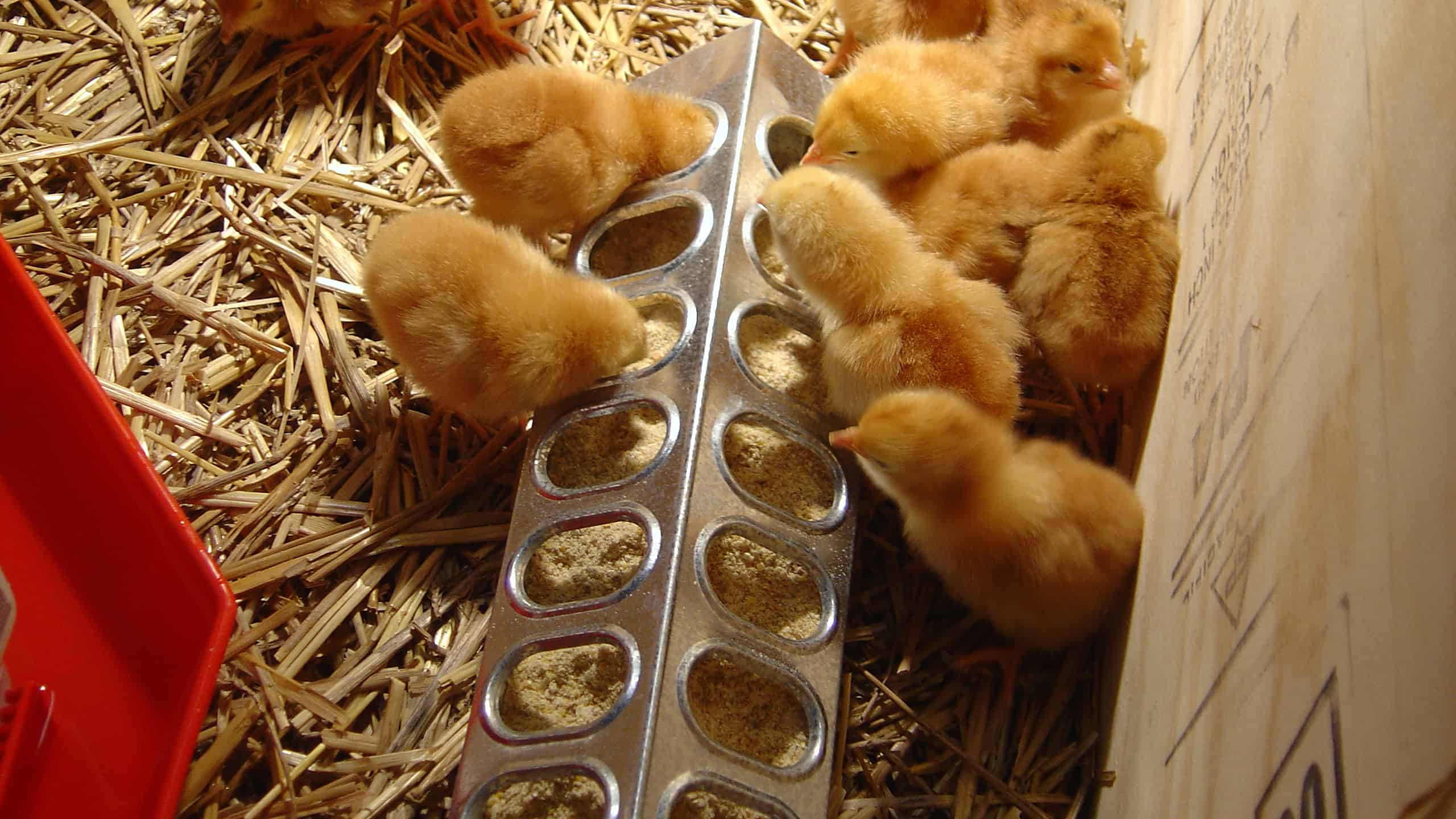
Commercially produced chickens live in climate-controlled environments.
©iStock.com/Jennifer Chamblee
The final seven states in the top 20 produce 50-199 million chickens:
- Oklahoma (197.1 million)
- Tennessee (195.3 million)
- Ohio (126.1 million)
- West Virginia (66.2 million)
- Florida (63.9 million)
- Minnesota (56.8 million)
- Wisconsin (55.9 million)
Minnesota is the northernmost of the top chicken-producing states in the country. In November 2023 an outbreak of avian flu led to the slaughter of almost one million chickens on a Minnesota farm. The rapid spread of disease through enormous flocks illustrates one of the downsides of large-scale commercial poultry operations.
What is Involved in Chicken Production?
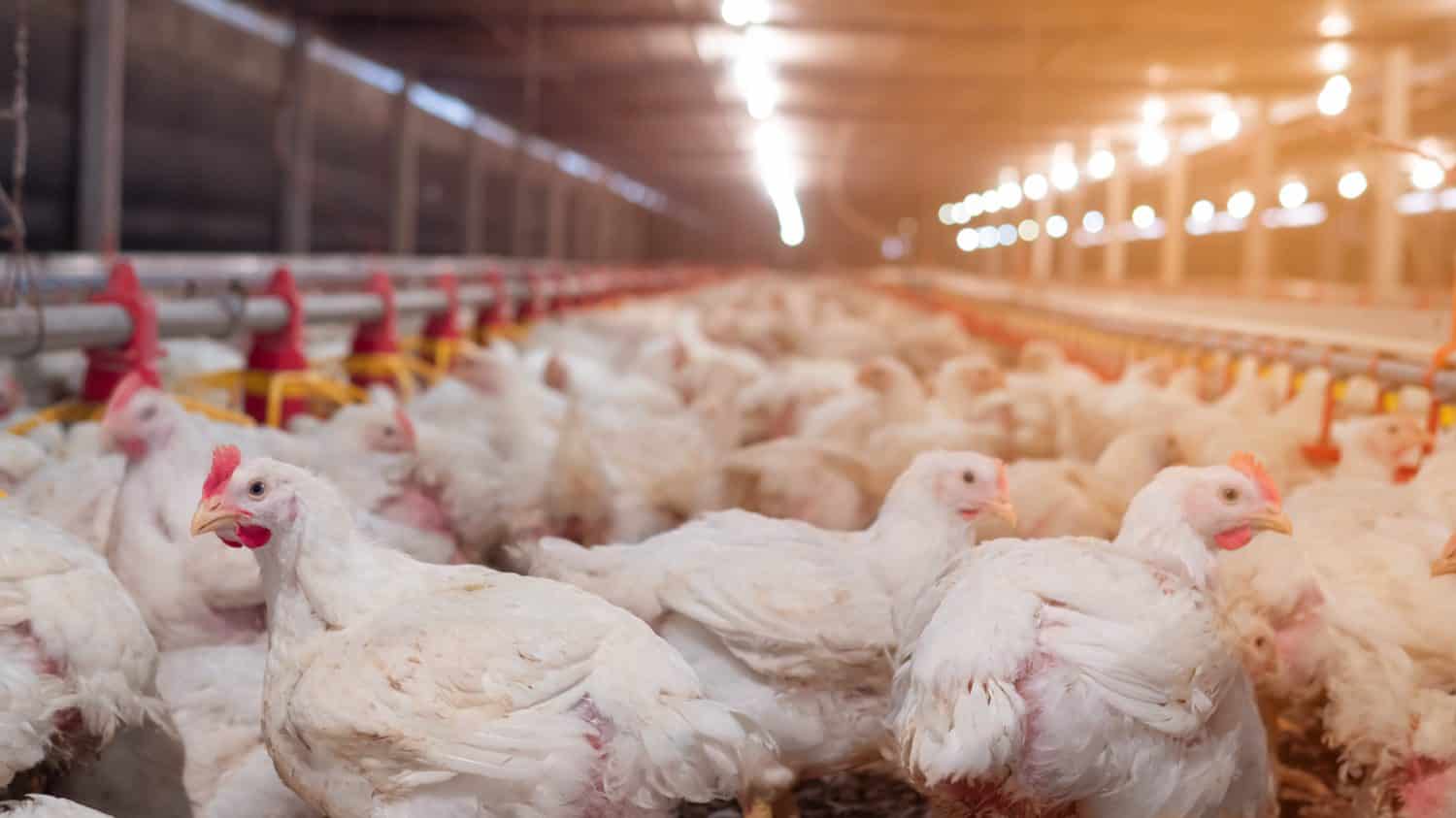
Modern chicken production is a carefully scientifically-managed process.
©Polawat Klinkulabhirun/Shutterstock.com
So, what gives some states an advantage in chicken production? A favorable climate, affordable rural land, and farming infrastructure are all important factors. The production process involves breeding chickens and raising them in large climate-controlled barns. Food, water, medication, and climate control happen automatically in computerized setups on the largest farms.
When the chickens reach four to seven pounds, they go to a processing facility for slaughter. After that, workers wash, chill, and package the meat. Then, after a USDA inspection, the meat goes to markets for sale. Note that commercial chicken producers do not use steroids, hormones, or genetic modifications. Antibiotics may be used to prevent disease and assist the growth process, but federal regulations require that antibiotics must clear the bird’s system before processing, backing this requirement with mandatory testing. Chicken farmers point out that it is in their best interests to make sure their animals are maintained to high standards so that their livelihood is not threatened.
What Do Critics Say?

Concerns about commercial farming methods make some people prefer free-range chickens.
©PeopleImages/iStock via Getty Images
Commercial poultry farming has come under intense criticism from animal welfare advocates. The Guardian summarizes some of the chief objections:
- Living conditions: Birds live in barns of 20-30,000, sometimes confined to small cages, never seeing the outdoors.
- Medical conditions: Factory-farmed birds are subject to the rapid spread of disease, sometimes requiring the destruction of hundreds of thousands of birds.
- Antibiotics: Large-scale use of antibiotics contributes to the development of antibiotic-resistant bacteria, which decreases the treatment options not only for animals but also human beings.
- Physical problems: Selective breeding has produced obese birds that can barely walk and have problems with their hearts, lungs, and bones.
- Nutritional quality: Chickens raised in these conditions are higher in fat and lower in protein and omega-3 fatty acids as compared to what was typical in the 1970s.
These types of issues have led some consumers to choose plant-based chicken substitutes or ethically sourced chickens raised in a free-range environment. These choices are generally more expensive, however. Thus, it’s important that any reforms to the industry take into account how they would impact food prices and nutrition for millions of lower-income people around the world.
Why Not Raise Your Own Chickens?
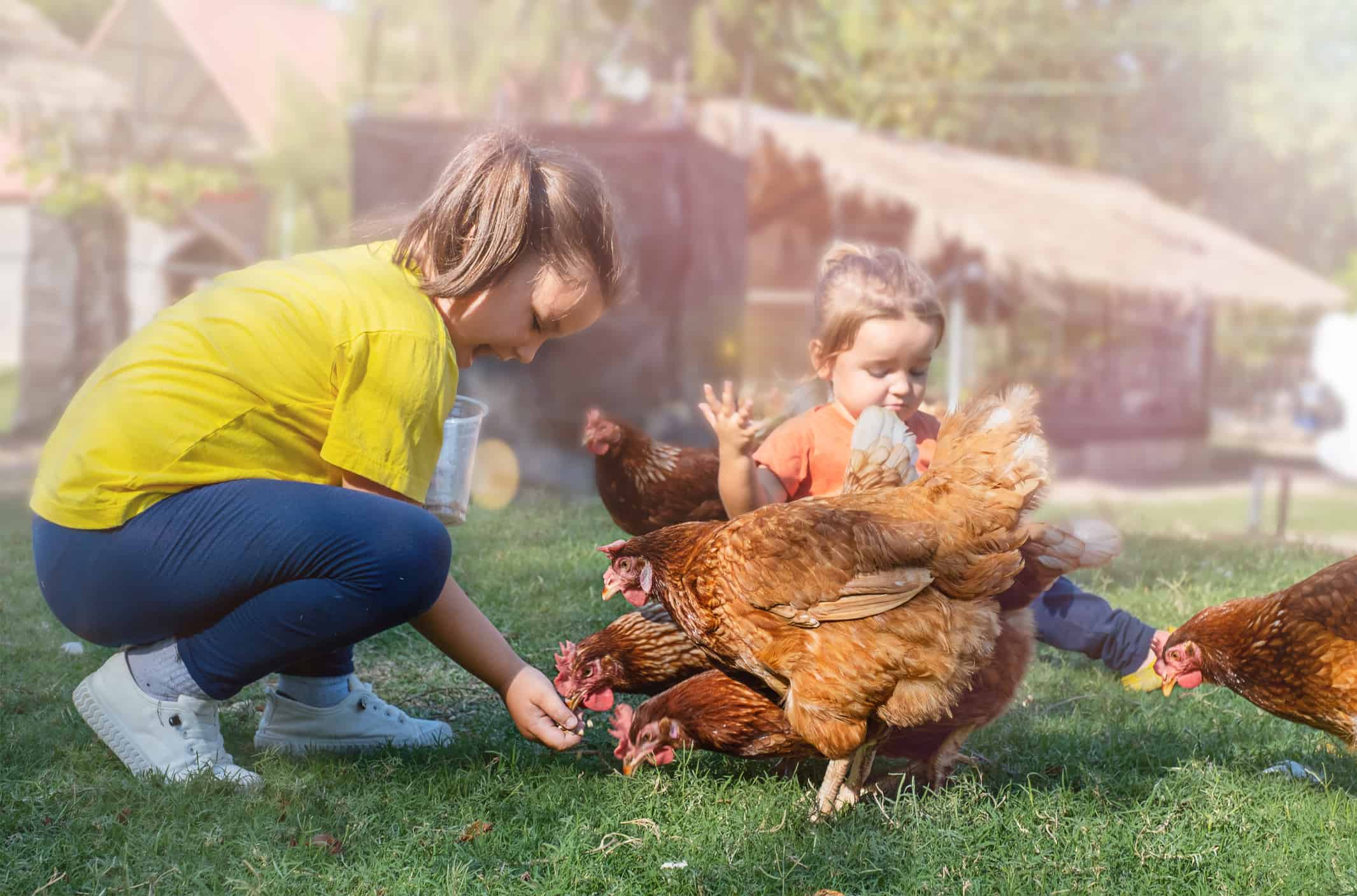
Chickens are popular for sustainable living, but do your research before jumping in.
©Valeriia Kuznetsova/iStock via Getty Images
Raising chickens has become increasingly popular in suburbs and even in urban farms. Not only do they provide a source of fresh organic eggs and meat, but they’re also pretty enjoyable as pets. Joseph Mattox of Virginia, who has raised chickens all his life commented on how stress-relieving they are: “I always like to hear the gentle sounds the mama hens and baby chicks make.” Also, hens and chicks are docile and easy for children to catch and hold. You can even collect eggs from the nest while the hen is sitting on them without much protest from her.
Here are some considerations before taking the plunge and starting a micro-chicken farm in your backyard:
- Local laws and homeowners’ associations: Are chickens permitted where you live?
- How many chickens?: Chickens are flocking birds, so you should keep three to six minimum.
- Chicken housing: You’ll need a coop with 3 square feet of floor space per bird and a fenced yard of 8 square feet per bird to keep them happy and healthy.
- Predators: Chickens have a great many predators including dogs and cats, raccoons, opossums, foxes, weasels, bobcats, and hawks. Therefore, you need to research what lives in your area and how you can deter them from your yard.
- Food and water: Investigate how much chicken feed costs in your area and how many birds it will feed. They need food and water daily, meaning you’ll have to hire a chicken sitter when you go on vacation.
- Cleaning: You have to shovel manure out of your chicken coop regularly to prevent disease.
- Health problems: Chickens can catch viral, bacterial, or fungal diseases, and can have abscesses, injuries from one another and predators, and other health problems. It is not always necessary to vaccinate small flocks. You need to locate a vet to help you, but you’ll also have to get familiar with chicken health issues to treat them yourself if you don’t want to run up big vet bills.
- Startup costs: Expect to spend around $700 to get your first flock set up.
Summary of Chicken Production by State
| State | Chicken Production, 2023 | |
|---|---|---|
| United States, total | 8.5 billion | |
| 1 | Georgia | 1.3 billion |
| 2 | Alabama | 1.2 billion |
| 3 | Arkansas | 1.1 billion |
| 4 | North Carolina | 971.4 million |
| 5 | Mississippi | 707 million |
| 6 | Texas | 706.6 million |
| 7 | Missouri | 301.2 million |
| 8 | Kentucky | 297.4 million |
| 9 | Virginia | 285.4 million |
| 10 | Maryland | 259.9 million |
| 11 | South Carolina | 249.4 million |
| 12 | Pennsylvania | 239.1 million |
| 13 | Delaware | 222.4 million |
| 14 | Oklahoma | 197.1 million |
| 15 | Tennessee | 195.3 million |
| 16 | Ohio | 126.1 million |
| 17 | West Virginia | 66.2 million |
| 18 | Florida | 63.9 million |
| 19 | Minnesota | 56.8 million |
| 20 | Wisconsin | 55.9 million |
| United States, total | 8.5 billion |
The photo featured at the top of this post is © sorsillo/iStock via Getty Images
Thank you for reading! Have some feedback for us? Contact the AZ Animals editorial team.







